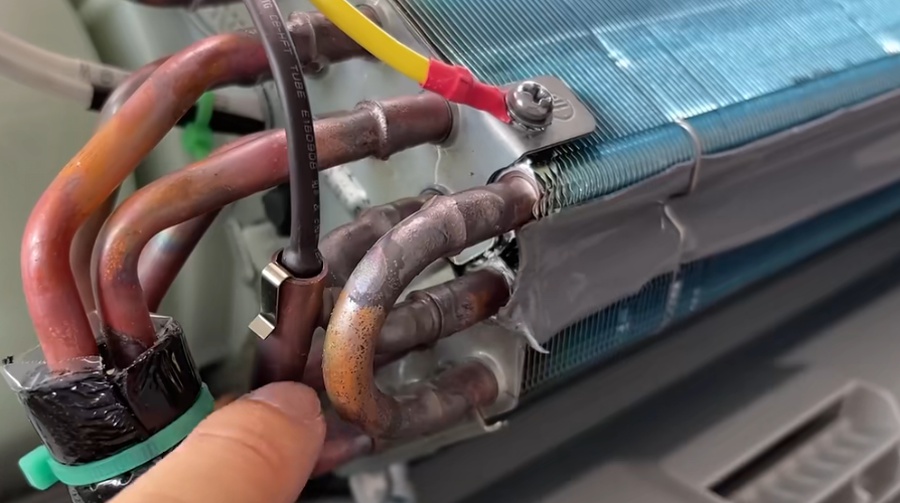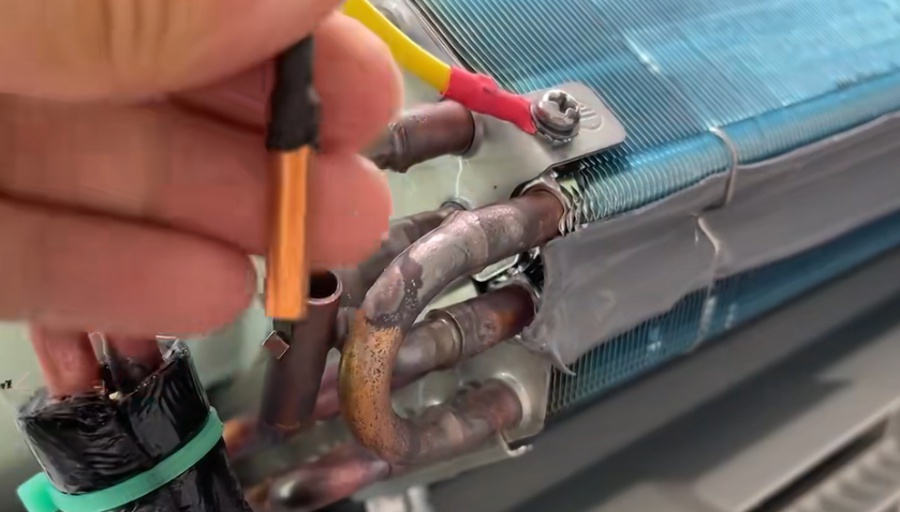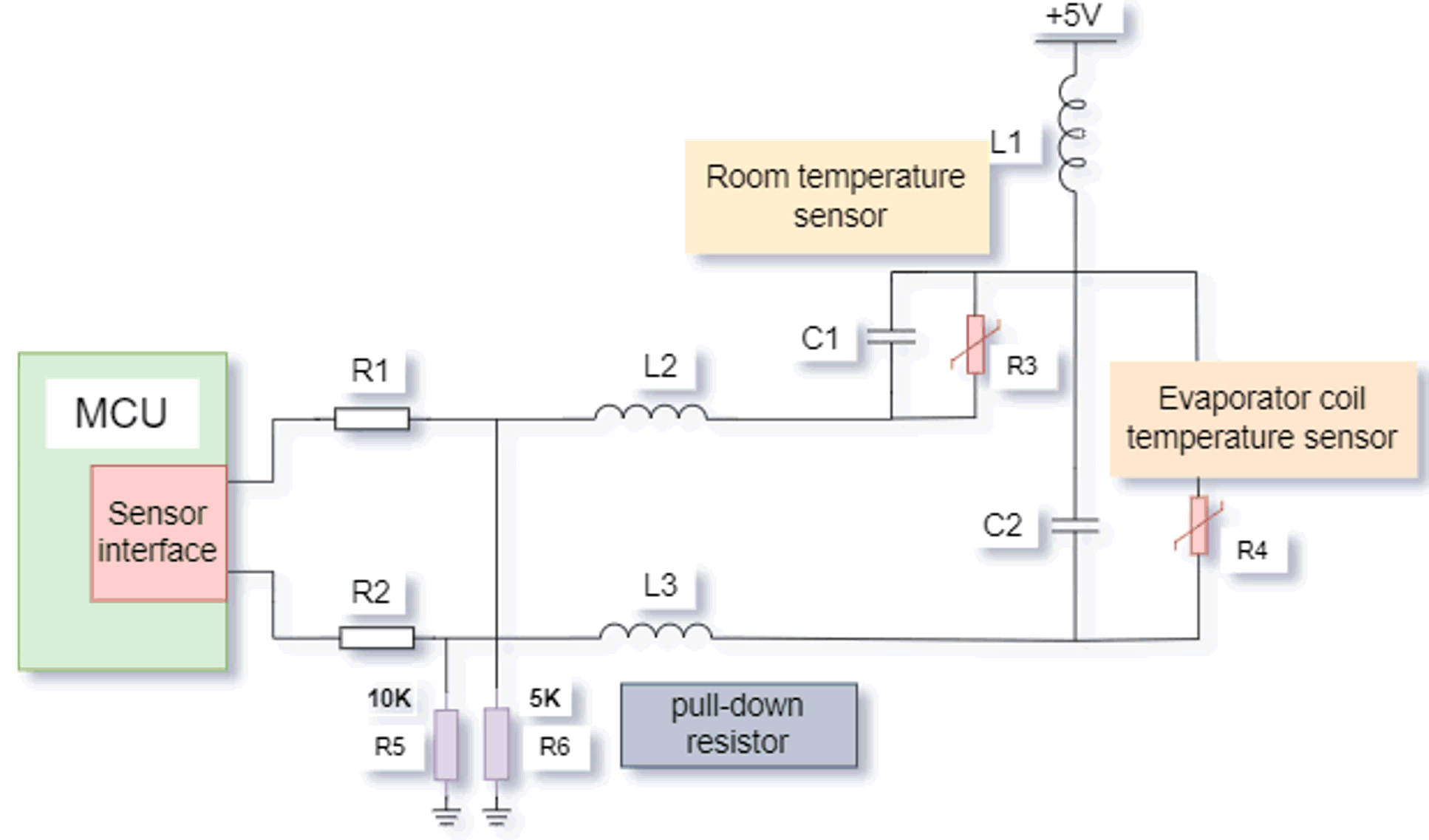SNIA054 January 2023 TMP61
1.2.1 Temperature Sensors in Indoor Unit of Air Conditioner
In an air conditioner indoor unit, there are usually two temperature sensors, which are an indoor temperature sensor and an evaporator coil temperature sensor. The indoor temperature sensor locates at the air inlet of the indoor unit. Its main function is to measure the indoor ambient temperature during the heating or cooling process. The temperature probe of the evaporator coil temperature sensor is usually attached to the pipeline of the evaporator and fixed on the copper tube by a clip to detect the temperature of the evaporator coil. Figure 1-2 shows the installation position of the evaporator coil temperature sensor.

 Figure 1-2 Position of the Temperature
Sensor for Evaporator Coil
Figure 1-2 Position of the Temperature
Sensor for Evaporator CoilThe air conditioner automatically checks the temperature of the indoor evaporator coil after a period of cooling operation. If the temperature does not reach a specified temperature (20°C), it is automatically diagnosed as lack of refrigerant and protected. If the temperature drops below +3°C, it shuts down in order to prevent frost, and the compressor stops working. When the temperature rises to 7°C or the compressor stops for more than 6 minutes, the compressor restarts. During heating, the indoor coil temperature is lower than 32°C, the indoor fan does not blow (anti-cold air), the outdoor fan stops when it is higher than 52°C, and the compressor stops when it is higher than 58°C (overheating). Different manufacturers have different temperature settings, but the basic protection features are similar.
In this process, the evaporator coil temperature sensor has four main functions:
- Overcooling protection during cooling
- Overheating protection during heating
- Controlling the speed of the indoor fan motor
- Assist outdoor defrosting during heating.
Taking a certain brand of air conditioner indoor unit as an example, since the indoor temperature to be detected is different from the evaporator coil temperature, the selected NTC thermistor is also different. The indoor temperature sensor uses a 5K NTC thermistor, and the evaporator coil temperature sensor uses a 10K NTC thermistor. Figure 1-3 shows the schematic diagram.
 Figure 1-3 Schematic of the Temperature
Sensor Circuit of the Indoor Unit
Figure 1-3 Schematic of the Temperature
Sensor Circuit of the Indoor Unit